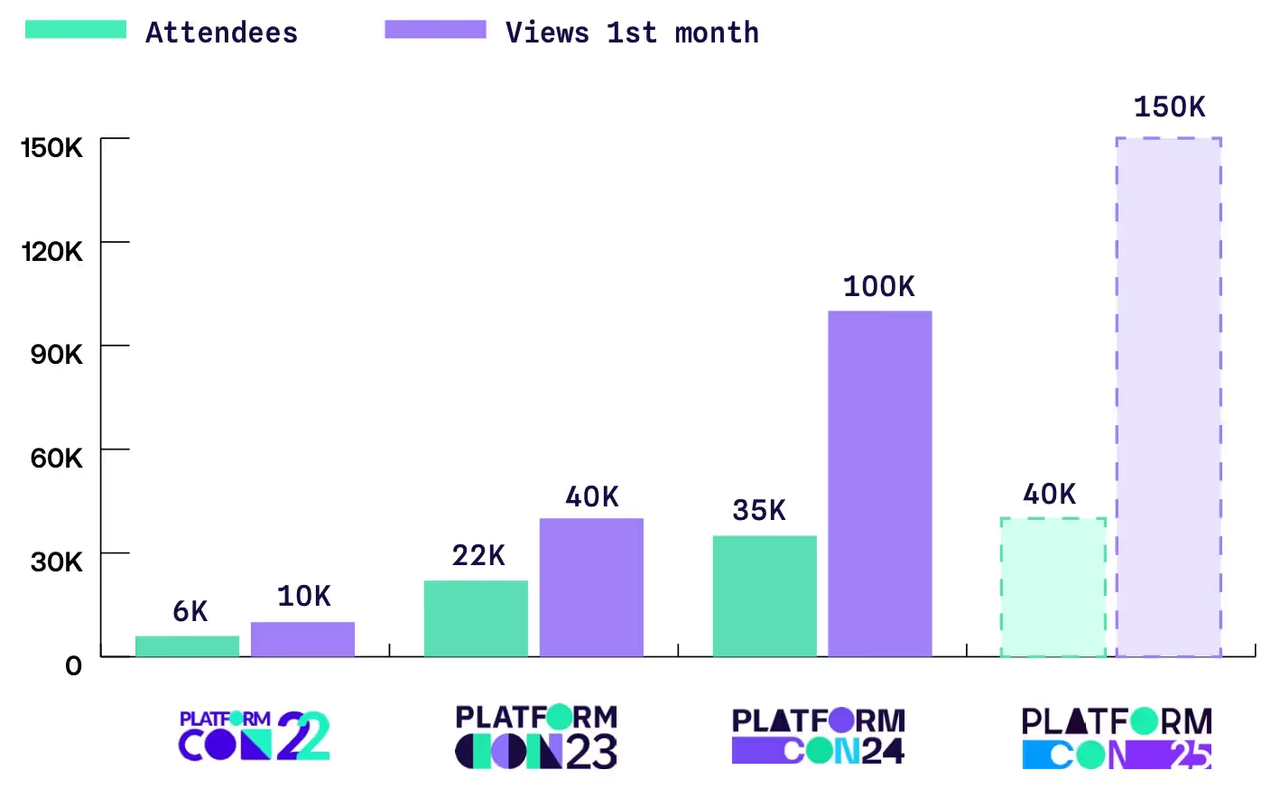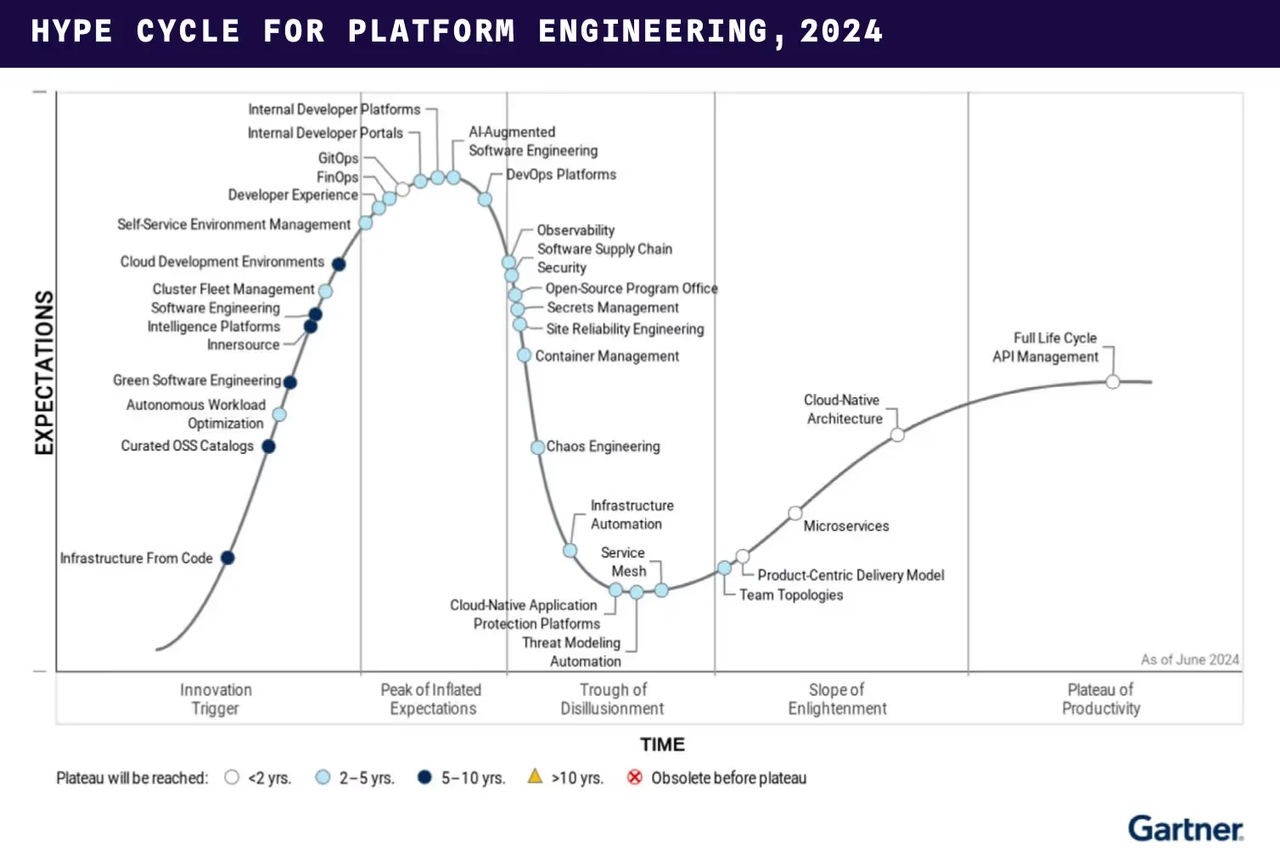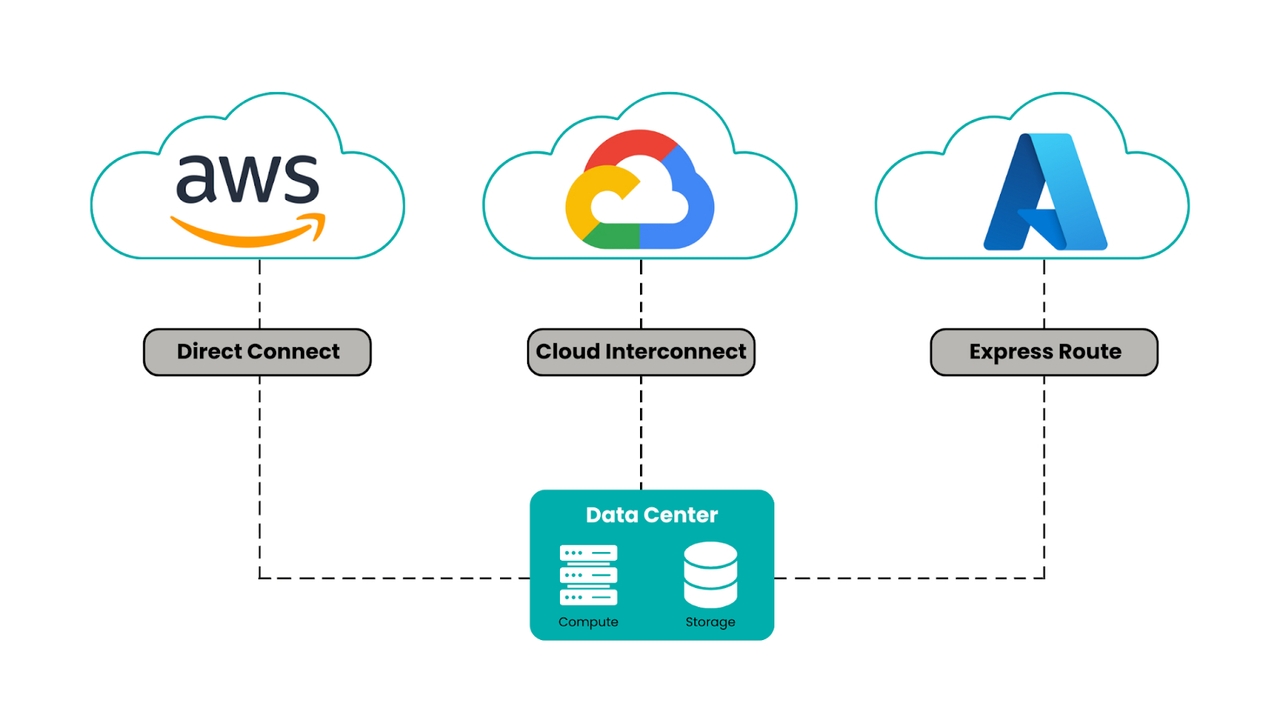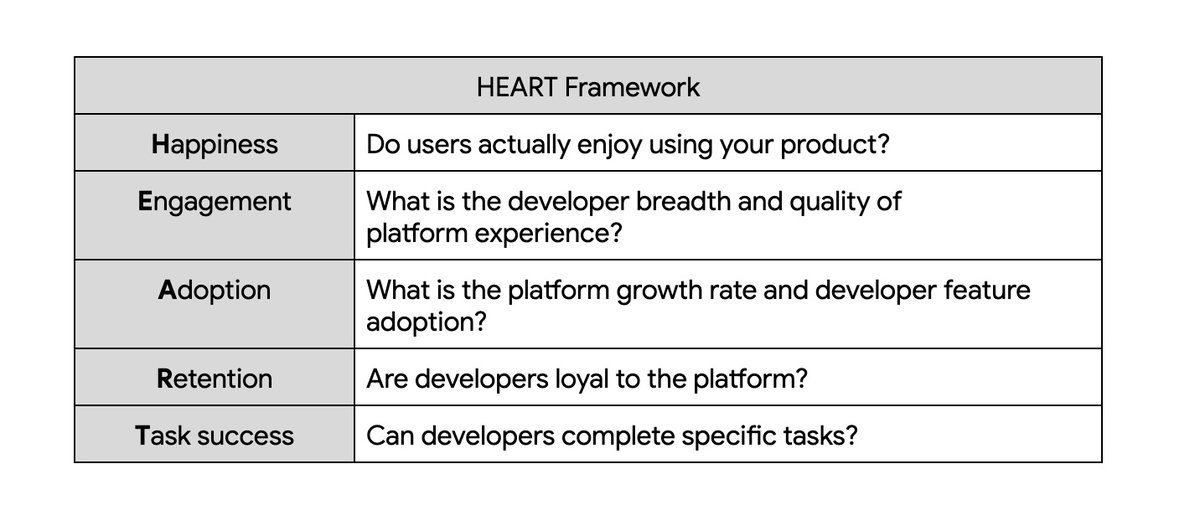Platform engineering is no longer a niche function within IT. It is the cornerstone of modern digital enterprises. As businesses prioritise scalability, agility, and resilience, platform engineering is at the forefront of enabling innovation through infrastructure optimisation, automation, and AI integration. In 2025, platform teams are evolving from infrastructure providers to strategic enablers, driving business agility and innovation. This article explores key trends shaping the landscape of platform engineering, as informed by Gartner’s Top 10 Strategic Technology Trends for the upcoming year.
In this article, we take you through the hype cycle for platform engineering in 2024 by Gartner. As you can see, platform engineering has experienced a massive surge in recognition, with the discipline now appearing on over 10 different Gartner hype cycles—a nearly 5x increase from last year. Notably, there is now an entire hype cycle dedicated to platform engineering. This growth is mirrored in the platform engineering community, with job titles on LinkedIn and interactions at major conferences like PlatformCon showing a strong, upward trend.

Additionally, infrastructure platform engineering, a key subdiscipline, has been featured in 8 different hype cycles, including those for Cloud Computing, SRE, and I&O Automation. This further highlights the increasing importance of platform engineering in driving innovation and business transformation. As Chief Technology Officers (CTOs) seek to drive their organisations forward, platform engineering emerges as a critical focus area, empowering them to achieve unparalleled levels of efficiency, security, and innovation.

This overview of platform engineering trends will be concise and focused, presenting a streamlined list of key insights.
What is happening to platform engineering in 2025?
1. AI-Powered Platforms
By 2026, 80% of large software engineering organisations will establish platform engineering teams as internal providers of reusable services, components, and tools for application delivery — up from 45% in 2022. This reflects the growing recognition of platform engineering's role in simplifying development processes and enhancing productivity, and this is exactly where the AI-powered platform engineering trend first starts to emerge.
As we already know, AI/ML is deeply integrated into platform operations, automating tasks like infrastructure provisioning, resource allocation, and incident response. Thus, AI in platform engineering enhances operational efficiency and reduces manual effort for platform teams. It improves resource utilisation and optimises costs through predictive analytics while enabling faster incident resolution and better application performance with proactive monitoring and anomaly detection.
For example, a platform team can use AI to predict and automatically scale resources based on anticipated demand, ensuring optimal performance and cost-effectiveness.
2. Composable and Modular Platforms
Platform architectures are becoming more modular and flexible, making it easier for businesses to adapt quickly to changing needs. By reusing pre-built components and services, teams can develop and launch applications faster while staying agile to respond to market shifts and customer demands. This approach also improves scalability and makes platforms easier to maintain over time.
For example, a financial services company could create a platform with reusable modules for authentication, payment processing, and data analytics, allowing it to roll out new financial products more quickly and efficiently.
Case in point, Bob Simms, director of enterprise infrastructure delivery at the US Patent and Trademark Office (USPTO), highlights how their platform engineering teams support over 200 applications by focusing on automation and observability. “We went from weeks to get a deployment done to minutes,” says Simms.
This rapid deployment capability is paired with infrastructure service-level monitoring and automated responses. “If we have a particular type of outage, our observability tool can also restart the application.” Such innovations demonstrate how composable platforms enable both scalability and resilience.
3. DevSecOps by Design
Security is now built into every stage of the software development process, with platform teams playing a key role in enforcing security policies and best practices. This integration helps reduce vulnerabilities and strengthens the overall security posture, while also speeding up the identification and fixing of security issues, by eliminating security-related obstacles, developer productivity increases.
Moving onto an example, a platform team might adopt security-as-code principles, automating security checks and ensuring that security policies are followed throughout the entire application lifecycle.
Further emphasising the role of structured pipelines, Sanjay Srivastava, chief digital strategist at Genpact, explains how platform engineering streamlines processes. “Platform engineering allows us to build a common pipeline and methodology for every product we deploy,” he says. This consistency not only simplifies security enforcement but also addresses talent gaps.
“We found this particularly helpful when it comes to skills and talent, which are hard to find and retain.”
4. Multi-Cloud and Hybrid Cloud Strategies

Platform teams are increasingly managing infrastructure across multiple cloud providers and on-premises environments as part of multi-cloud and hybrid cloud strategies. This approach provides flexibility, scalability, and resilience while optimising costs by leveraging the strengths of different providers. Organisations can mitigate vendor lock-in, enhance disaster recovery, and tailor infrastructure to business needs. For instance, a retail company might adopt a hybrid cloud strategy by using the public cloud for scalable e-commerce and a private cloud for sensitive data, ensuring both performance and security.
For CTOs, these strategies are critical to driving innovation and ensuring business continuity. Multi-cloud adoption reduces dependency on a single vendor, enabling cost-effective scaling and improved risk management. CTOs can leverage these approaches to modernise IT operations, support AI-driven applications, and enhance collaboration across teams, ultimately delivering faster and more reliable services.
Platform engineering plays a key role in enabling these strategies by abstracting infrastructure complexities and automating tasks like provisioning and scaling. Tools such as VMware vRealise, HashiCorp Terraform, and Microsoft Azure Arc help standardise operations, ensuring seamless integration and consistent performance across diverse environments. This allows CTOs to maintain operational efficiency and security while focusing on strategic growth.
A significant majority of enterprises, over 84%, have adopted multi-cloud strategies to enhance cost efficiency, and business agility, and leverage top-tier services from various providers. According to Google, it is expected that more than 85% of organisations will adopt a cloud-first approach by 2025, with over half utilising multi-cloud strategies to foster business innovation and accelerate digital transformation.
5. Focus on Developer Experience
In platform engineering, success hinges on providing a great developer experience. Just like a company’s performance is often judged by customer satisfaction, a platform engineer’s impact is measured by how easy and enjoyable it is for developers to work with the platform.
If the platform feels clunky, overly complicated, or inefficient, developers won’t want to use it. And if developers don’t use it, the platform’s value drops significantly.
At PlatformCon2024, Darren Evans (EMEA Practice Solutions Lead, Application Platform) delivered a talk titled "Improving your developers' platform experience by applying Google Frameworks and Methods”, where he discussed Google's HEART Framework, which offers a comprehensive perspective on the developer experience within an organisation by using actionable data. This was a major point in creating developer experience as a trending pinpoint for 2025 in platform engineering.

⬆️Google HEART Framework
In platform engineering, the HEART framework can be adapted to fit different goals and situations. For example, enhancing the onboarding experience for new developers might prioritise adoption, task success, and satisfaction. On the other hand, rolling out a new feature could focus more on adoption and happiness. To boost overall platform usage, it may be important to track metrics like engagement, retention, and task success.
Platform teams are increasingly focusing on improving the developer experience by offering self-service tools and easy-to-use interfaces. This shift leads to higher developer productivity and satisfaction, as it reduces the need for platform teams to handle routine tasks. As a result, teams can launch new applications and features more quickly. A platform team might provide a self-service portal that allows developers to provision resources, deploy applications, and monitor their infrastructure without needing constant assistance from the platform team.
To wrap things up
Platform engineering in 2025 is evolving rapidly. By embracing these trends, platform teams can empower developers, drive innovation, and deliver exceptional business value. As technology continues to advance, platform teams will play a critical role in shaping the future of digital enterprises.
Platform engineering has become a key focus in IT and operations (I&O) as companies work to handle the growing complexity of cloud-native and distributed systems. Over the past decade, more organisations have adopted platform engineering to simplify workflows and better support their development teams. These efforts have come a long way, proving they can boost scalability and improve developer productivity.
The platform engineering community has also grown, with over 15,000 engineers now sharing ideas and best practices. Events like PlatformCon 2023, which recently held its second edition, show how much interest this field is gaining. These conferences are a great way for CTOs and tech leaders to stay updated on the latest trends, tools, and strategies shaping the future of platform engineering.
This article is based on sources such as Gartner, cio.com, and studies based on industry trends. The specific impact and relevance of these trends may vary depending on the individual organisation and its specific needs.
I hope this article provides a valuable overview of platform engineering trends for 2025!
References:
Top 5 takeaways from the State of Platform Engineering Report 2024
CIOs take note: Platform engineering teams are the future core of IT orgs | CIO
The Role of Platform Engineering in Multi-Cloud Strategies for 2025 | Improwised Technology
How platform engineers can improve their developers’ experience | Google Cloud Blog







